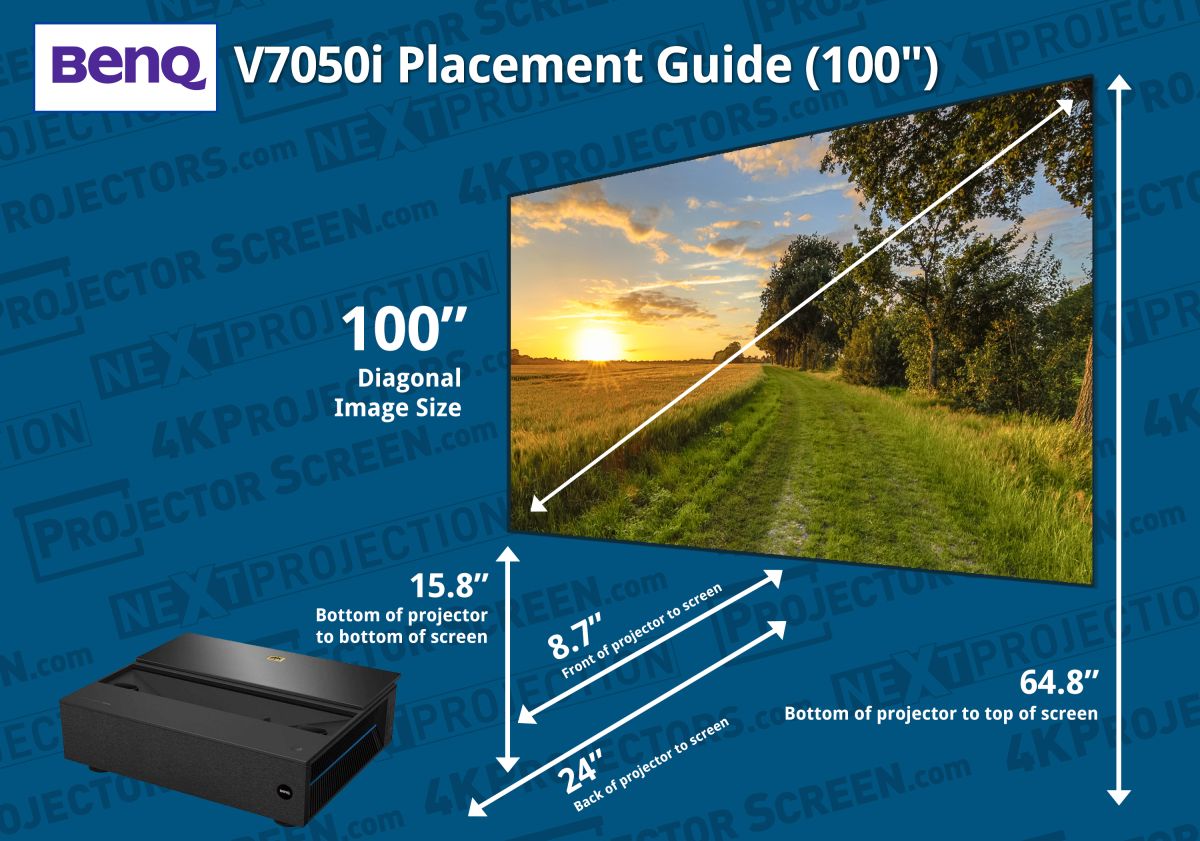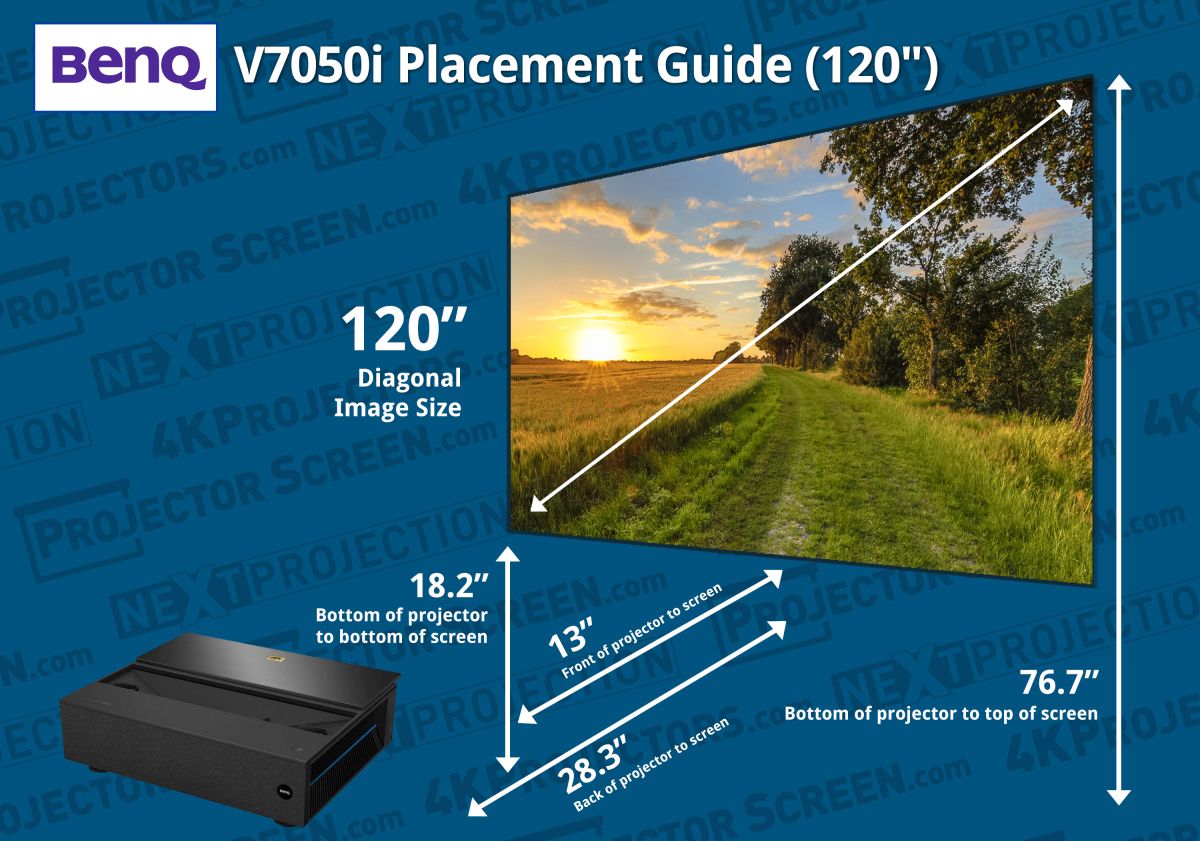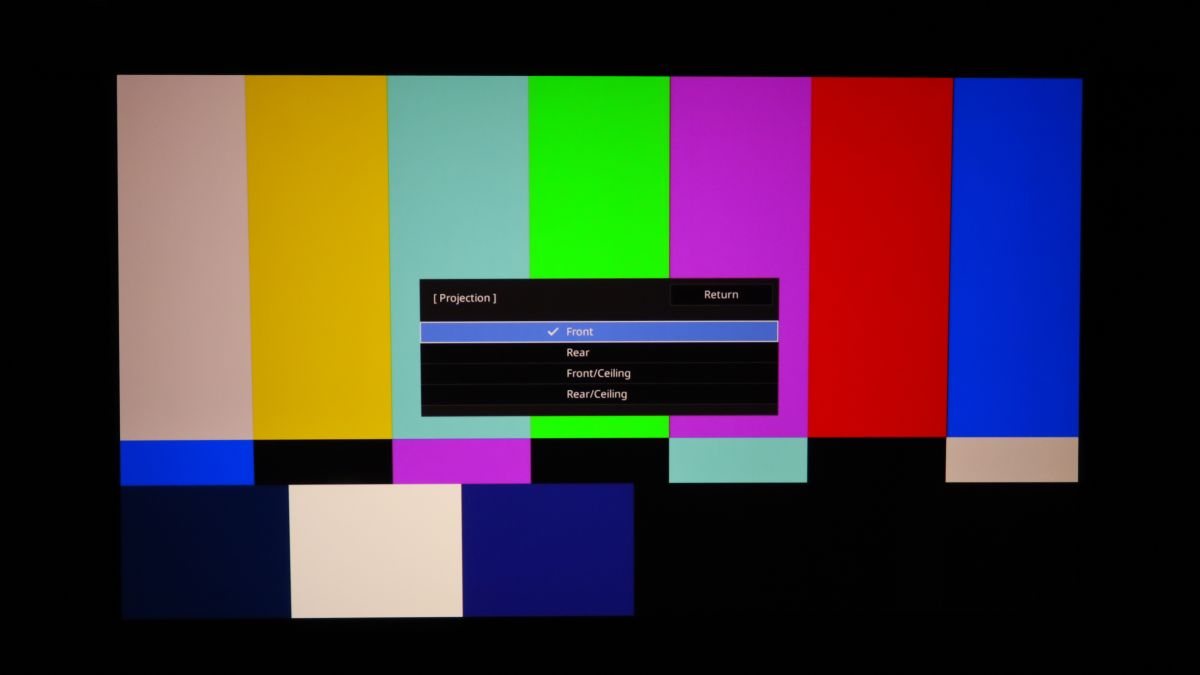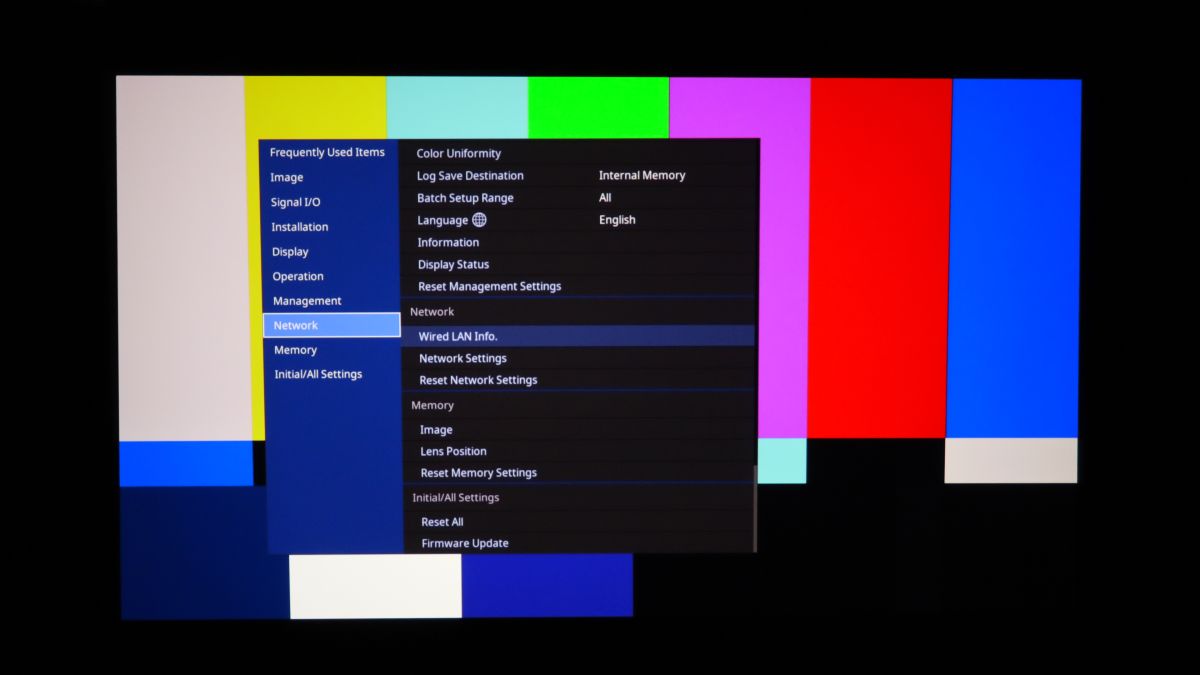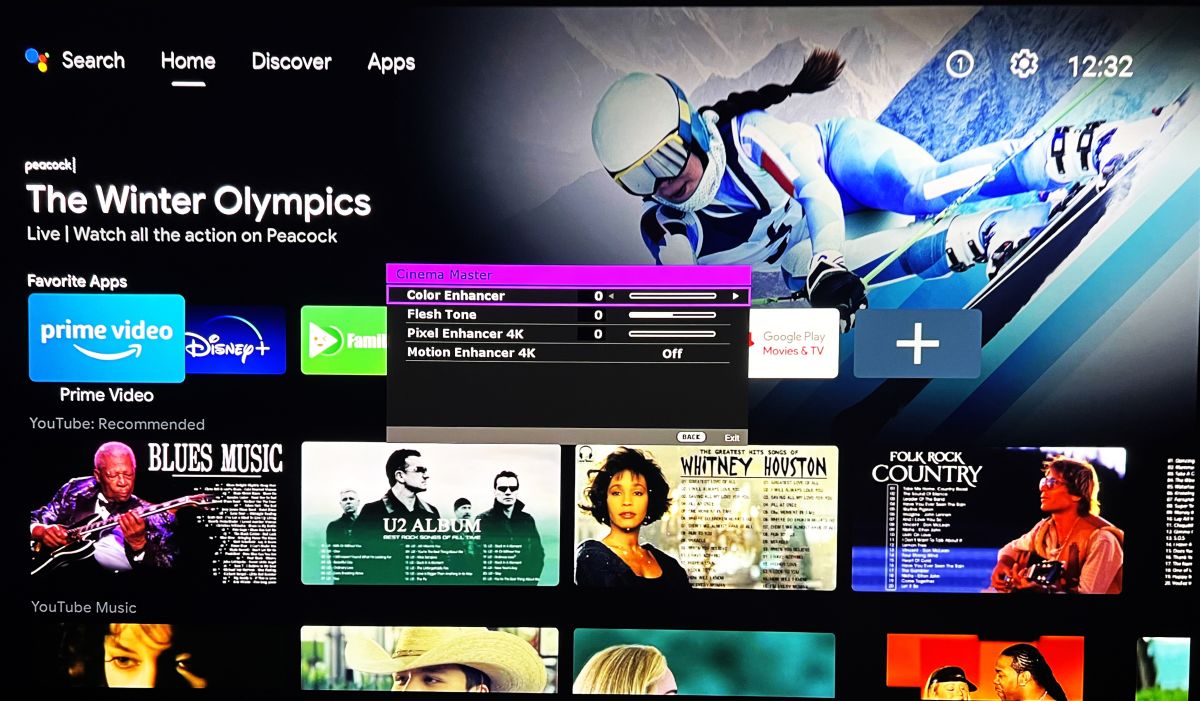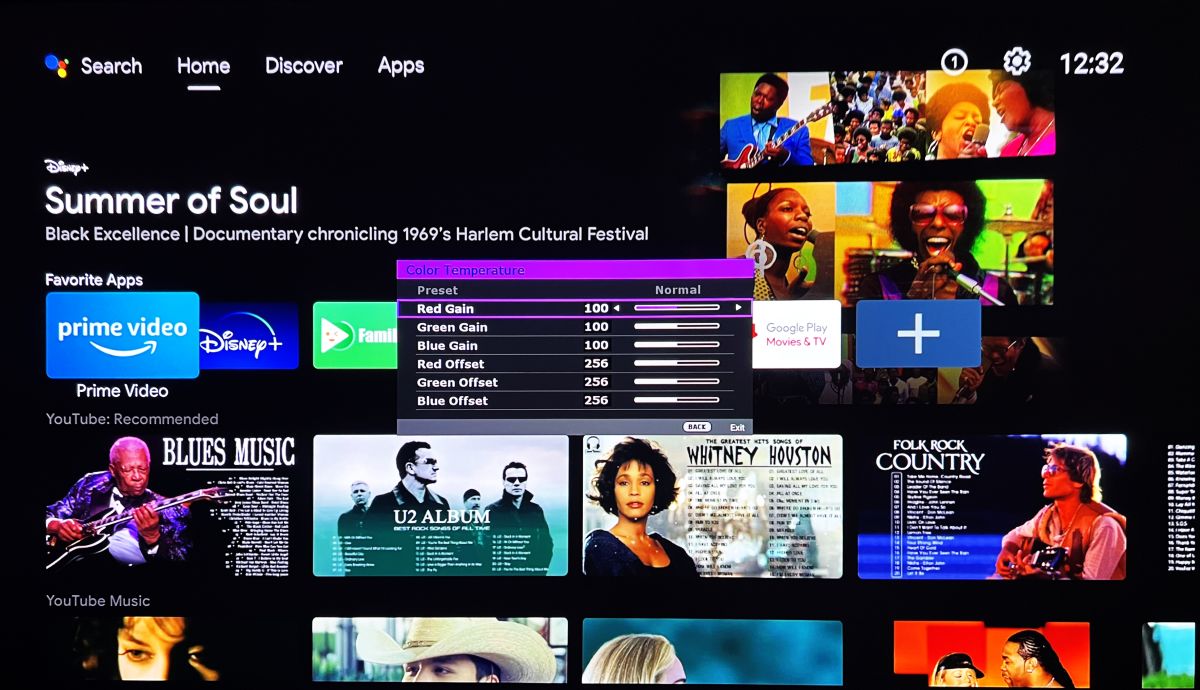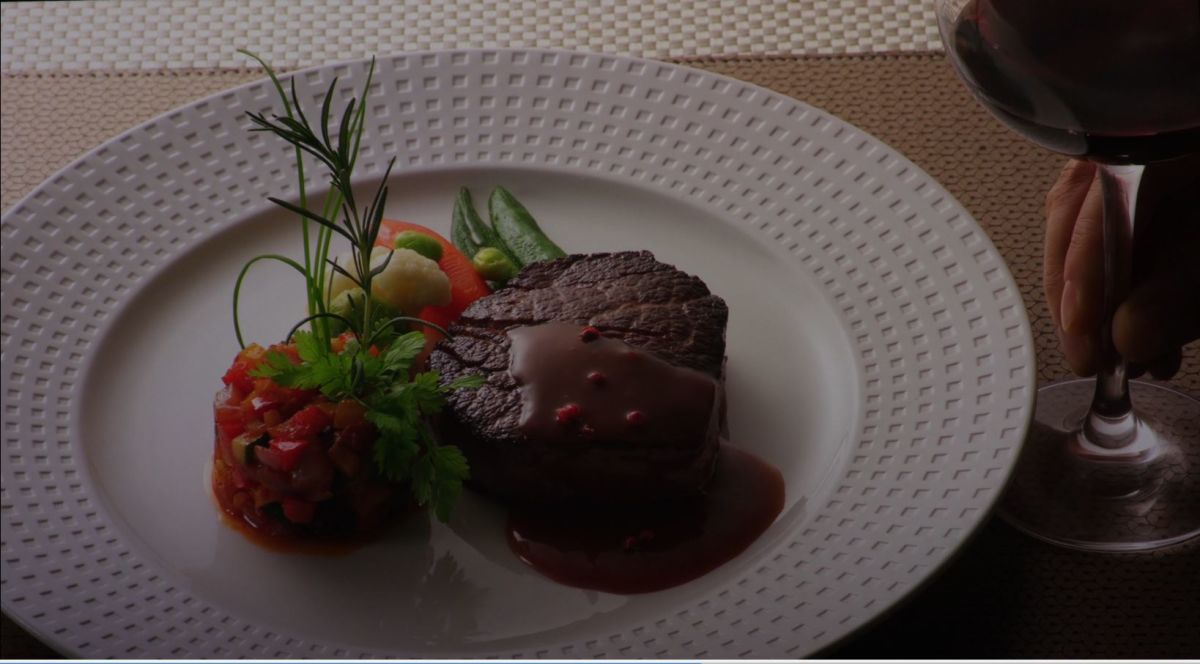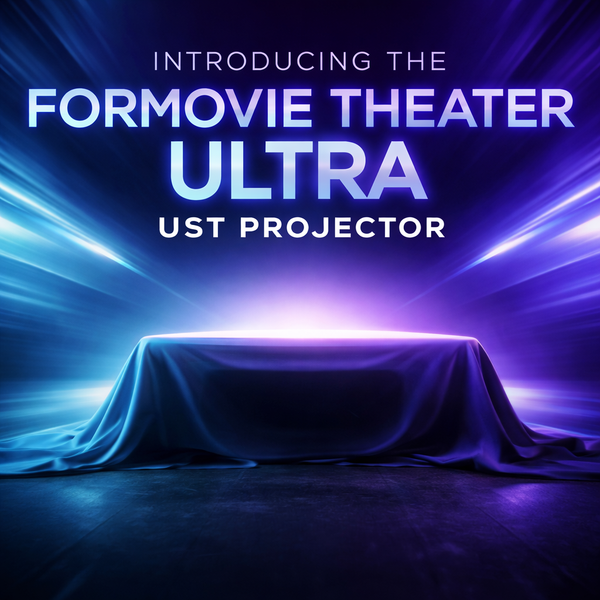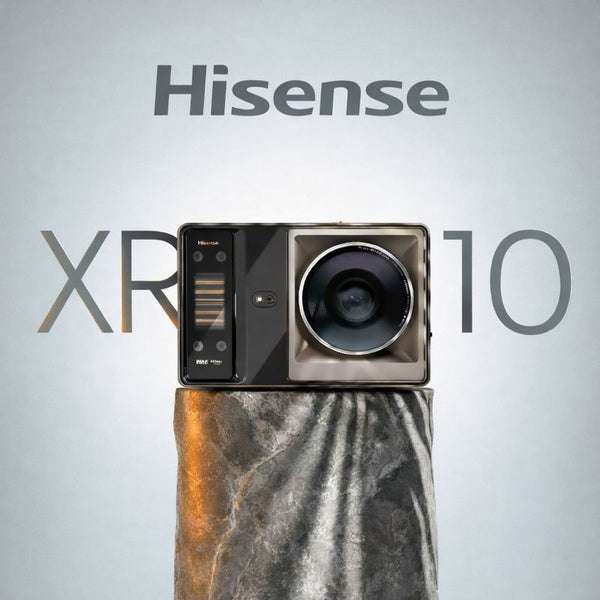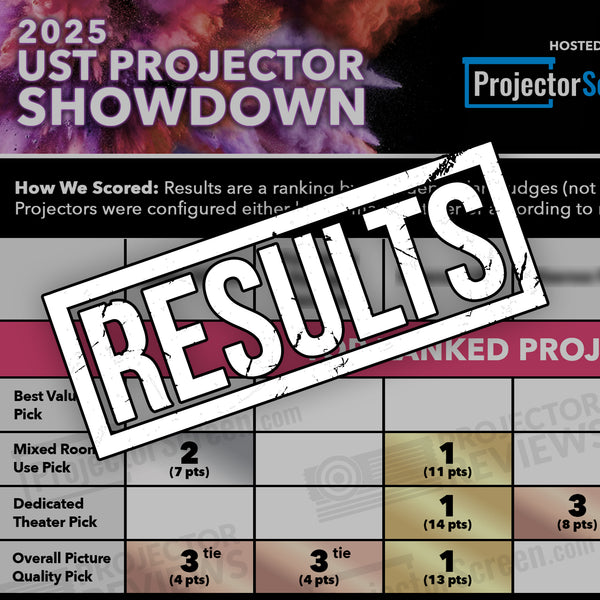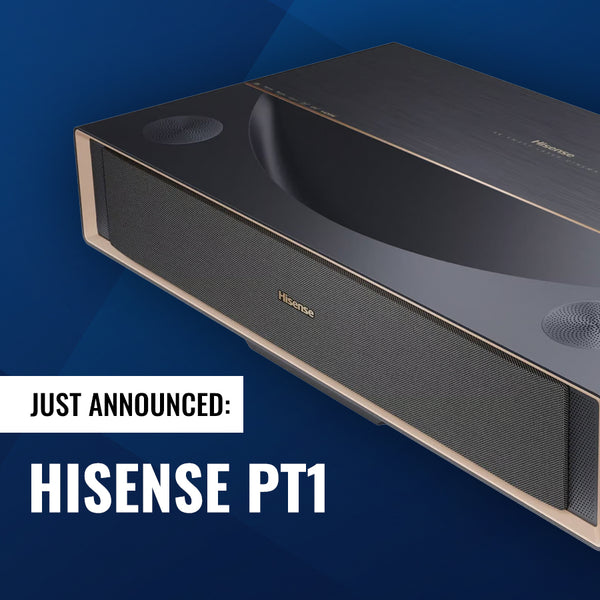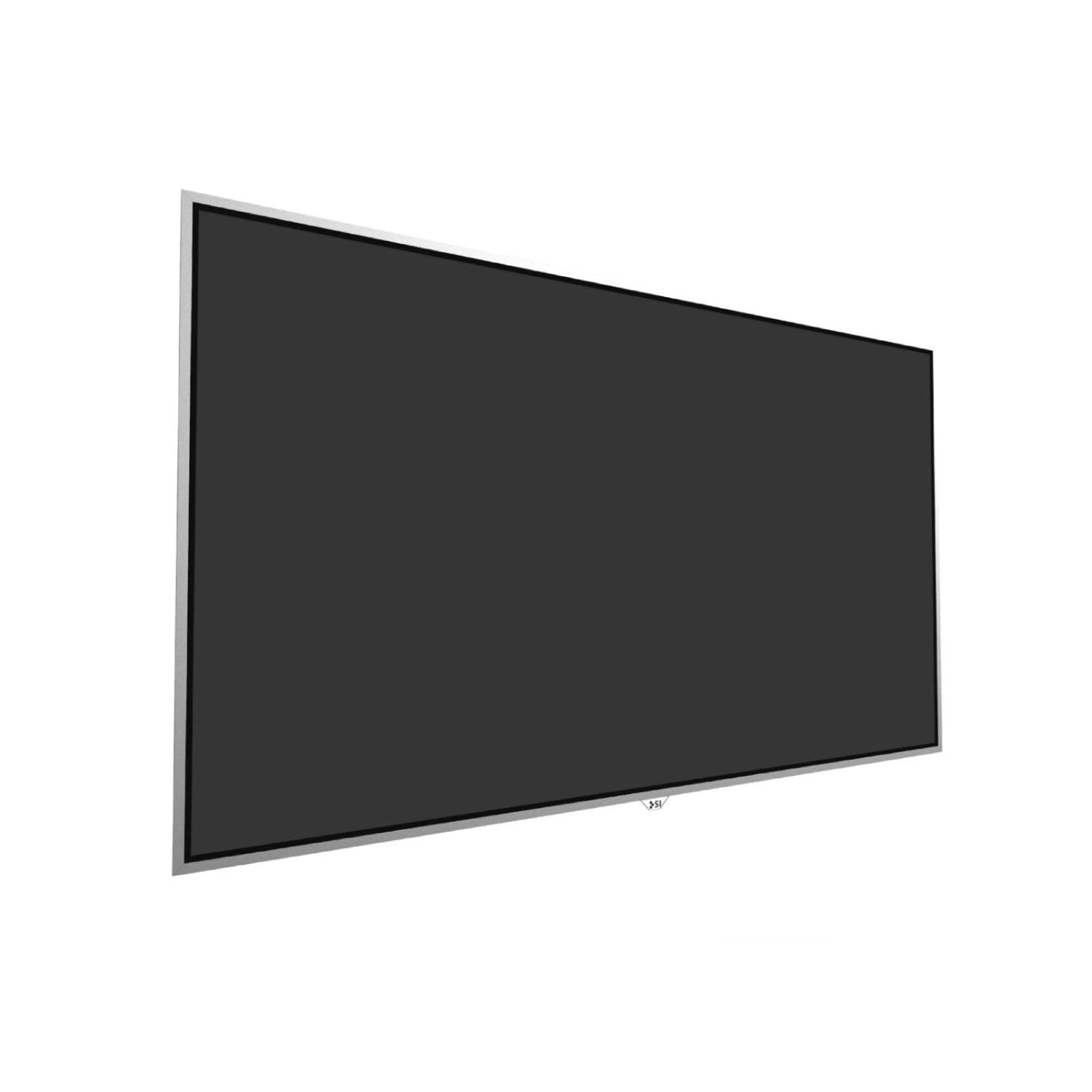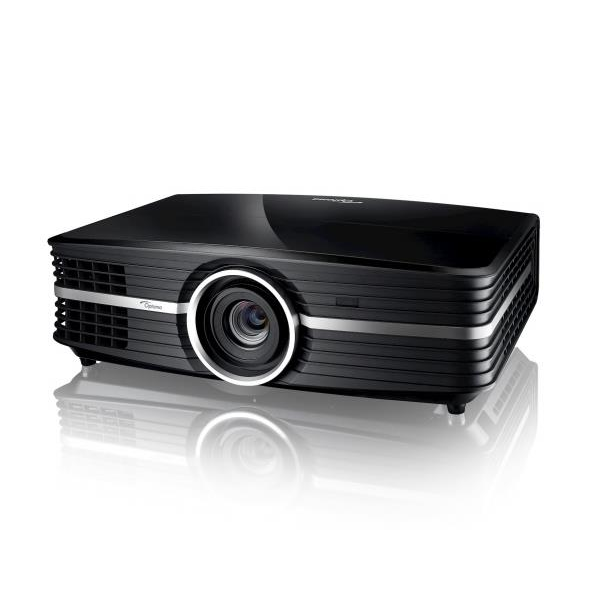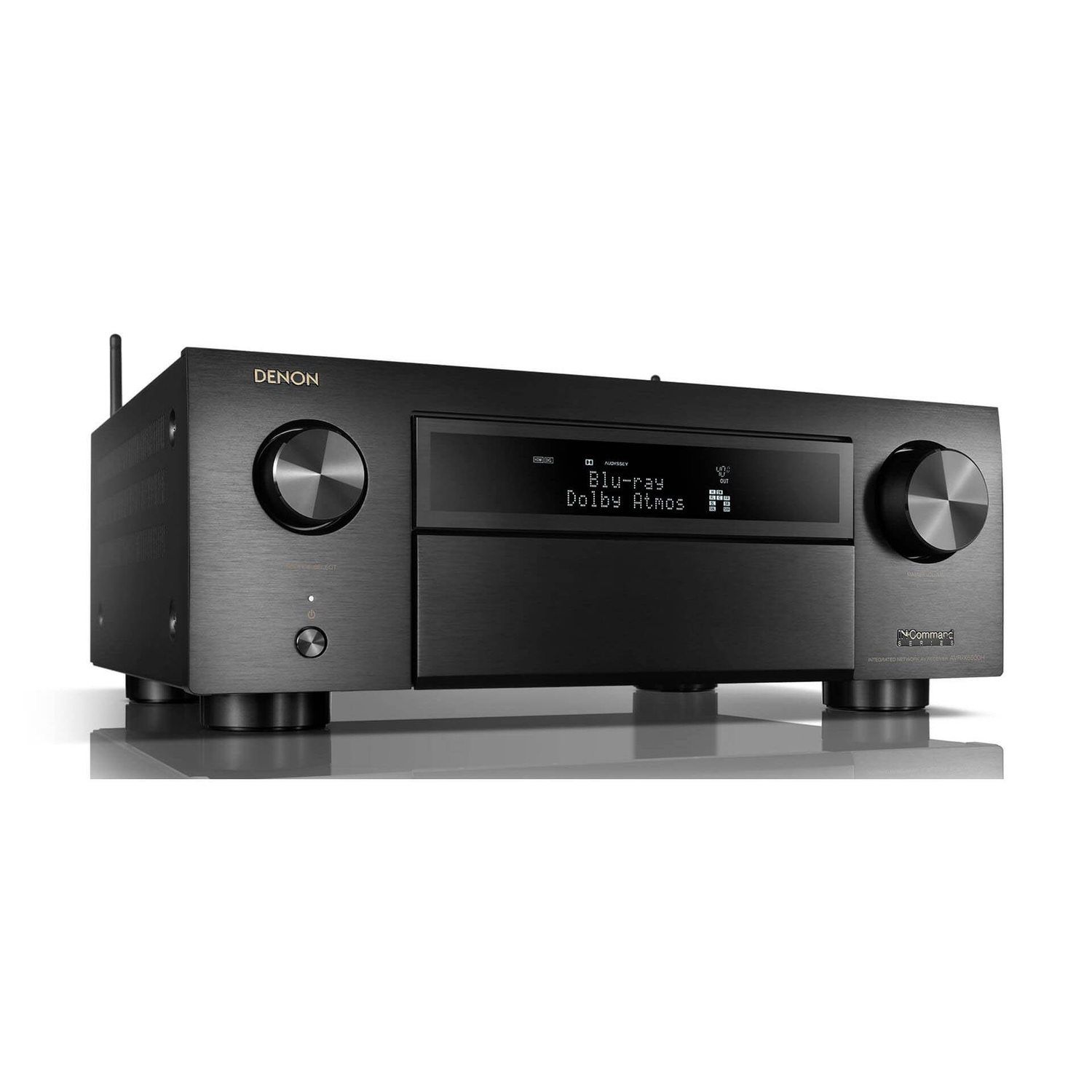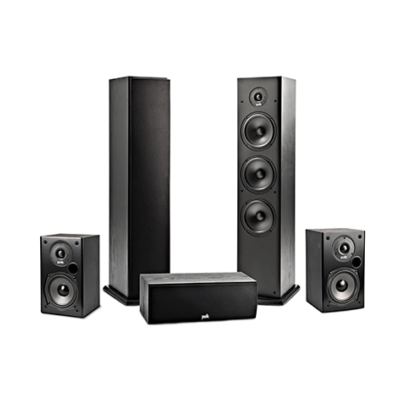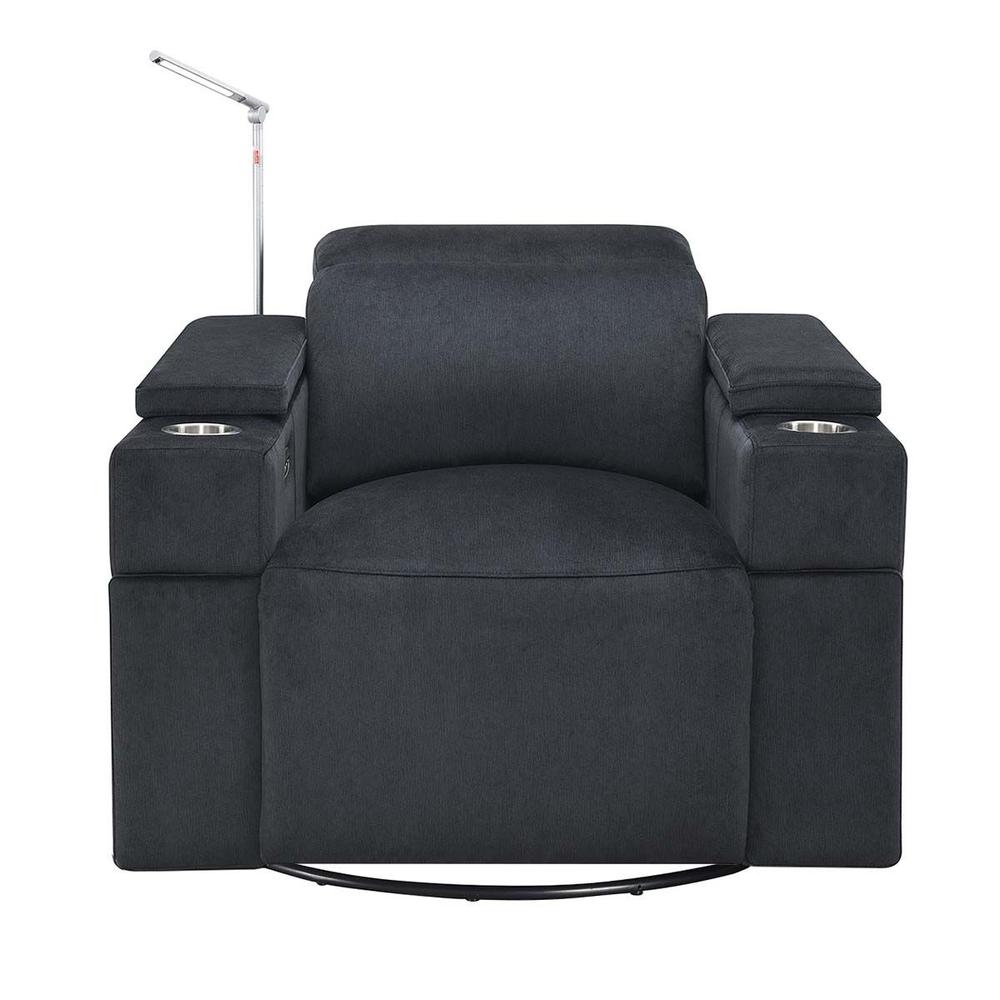BenQ V7050i Ultra Short Throw Projector In-depth Review
Highlights For The BenQ V7050i
Even though they were a bit late to the UST game, the BenQ V7050i is one of the best single laser ultra short throw projectors available. It offers 2500 lumens of brightness and covers an incredible 98% of the DCI-P3 color gamut which gives you an incredibly vibrant picture even in well lit rooms. When you take into account it's lower price point, this 4K laser TV is an absolute winner. So much of a winner that it was chosen as the best single laser ultra short throw projector at our 2022 Laser TV Showdown.
- Accurate, bright, vivid colors due to its support for the DCI-P3 Color Space, up to 98%. BenQ’s cinematic color technology is one of the primary features they tout about this unit, and it delivers on its promise!
- Very clean, sharp and detailed image. It has a cinematic, celluloid, movie-like image that other true RGB USTs don’t.
- Dynamic black technology produces a great perceived black floor, which provides good contrast for this class of DLP.
- Filmmaker mode strips away all of the digital processing to allow you to view the content exactly as the filmmaker intended. This is one of the best implementations of filmmaker mode we’ve seen so far.
- Fantastic bang for your buck.
- Supports 3D content and it is one of the few laser UST projectors that does.
- Motorized sunroof slides open to reveal the lens when you power on the unit and it slides it shut to protect the lens when you power down. Very useful to protect the lens from dust, debris and prying little hands!
- No built-in Smart TV apps, however it does come with an Android TV dongle, which occupies one of the USB ports and one of the HDMI ports, leaving you with only one other HDMI input for other devices and takes away a USB slot.
- With an approximate 80 millisecond gaming lag time, this is not the first choice for competitive gamers. However, for casual gamers, who just want to play in 4K, this projector is more than suitable.
- HDMI sync time takes way too long to show an image when switching picture modes, resolutions, frame rates or dynamic range (HDR to SDR and vice versa).
- While it has fantastically vivid colors, we would have liked to see it cover the full BT.2020 spectrum for futureproofing.
Aesthetics
Considering the design of this Laser TV, you can tell that BenQ put a lot of effort into and paid a lot of attention to the design of this projector. The first thing you notice is that they went with the black housing as opposed to the white that seems to dominate the UST space. After speaking with numerous customers, the black housing is definitely preferred.
This projector has a really unique feature that we have not seen on any other UST. BenQ calls it the automatic sunroof. It's a protective panel that opens up when you turn the projector on and closes, covering the lens, when you turn the projector off. Its purpose is to prevent dust build up on the lens when the projector is not in use, but it also will prevent any accidental damage to the lens from pets, kids or otherwise.
The sides of this projector incorporate a dust, reducing louver design to help keep the internals clean as well as a snazzy blue racing stripe as an accent color.
Installation, throw ratio, zoom
Throw Ratio: 0.252:1
The BenQ V7050i has a throw ratio that puts it in the middle of the pack. To make a 100” screen size it only needs to be placed 7.3 inches from the screen and just 11.4 inches to create a 120” image on the screen.
Projector to Screen Alignment
We found aligning the this BenQ projector with the screen to be the easiest out of the USTs we've tested.
The BenQ V7050i comes with built-in, “ruler type” placement guides that help you find the optimal position from the screen to achieve the image size that you desire. This made it much easier to align the projector and screen. Though remember you're extending the placement guide arms to where the screen is and not all the way to the wall. We did this using two pieces of string dangling from the screen.
The 4 adjustable feet were easy to access and you didn't need to lift the projector to adjust them.
Projector Focusing
There is an electronically adjustable motor focus mechanism built into the V7050i, so it is very easy to adjust focus based on your screen size between 70-120”. You would want to turn on the Test Pattern from the menu, or input one from a calibration disc or pattern generator. Go to INSTALLATION, then select Motor Focus and use < or > to adjust the focus settings for the sharpest image on screen.
Lens Zoom
N/A. USTs are fixed zoom and rely on physically moving the projector itself forward and backwards to make their images smaller and larger.
Projector Light Source
The V7050i has a blue laser phosphor light engine paired with a yellow phosphor wheel and an RGBRGB Color Wheel with a life expectancy of at least 20,000 hours. This is dependent on the laser power and modes used throughout its lifetime.
Brightness
This BenQ UST boasts a brightness of 2,500 ANSI lumens making it perfect for rooms with lots of ambient light, such as your living room. When you pair this with a proper ultra short throw, Ambient Light Rejecting (ALR) screen, you've got a true television replacement.
With ambient light from light fixtures and windows, as in a typical living room environment:
The V7050i has the raw lumens to punch through normal ambient lighting conditions with some brightness to spare. We tested it on both an ALR screen and a plain white acoustically transparent screen. In both instances the image was more than watchable and the image was still discernible as far as colors, contrast and image fidelity. The ALR screen is by far the best choice, as expected in this situation.
For testing we used the Spectra Projection Vantage UST screen.
With lights off, in a dedicated and light controlled environment:
When you turn off the lights and control ambient light, the projected image takes on a whole new dimension of colors and depth. This UST is one of the better performers with its blue laser light source partnered with its RGBRGB Color Wheel, giving it beautiful DCI-P3 colors, as found on UHD HDR Blu-ray and Video Streams! When compared to the other RGB Laser projection technologies we have experienced, the V7050i holds its own when you see the P3 colors it reproduces for the first time. This projector has a very film-like image with great inter-image contrast, resulting in a deep, sharp, detailed 3-dimensional image, especially with movies. The standard white screen is your best choice if you plan to install this in a dedicated, light controlled environment.
Measurements in all modes, rated at 2,500 Peak Lumens
Mode |
Lumens |
|---|---|
Game |
2,592 |
Dynamic |
2,834 |
Standard |
2,486 |
Movie |
2,349 |
Filmmaker |
2,065 |
Color Gamuts
When it comes to color, the new BenQ UST is one of the best, offering visibly more vibrant colors than every other single ultra short throw in its class. Subjectively speaking, the BenQ V7050i has some of the most vivid colors we've seen on a single laser projector and even beats out some triple laser UST projectors.
The BenQ V7050i uses a six segment, RGBRGB (Red, Green, Blue, Red, Green, Blue) color wheel, which allows it to achieve 98% of the DCI-P3 color space, thanks to BenQ’s cinematic color technology. It definitely shows in the content.
Other competitors that use blue laser phosphor may employ a different color wheel which has RGBY (Red, Green, Blue [clear segment using light from blue laser], Yellow [clear segment using light from yellow phosphor]) or RGBW (Red, Green, Blue, White) segments to increase overall brightness, but at the expense and sacrifice of total color volume. This is not ideal in the home theater environment, but works just fine as a living room television replacement.
SDR Color Gamut
You can see that the BenQ V7050i does a great job out of the box when it comes to color accuracy.
HDR BT.2020 Color Gamut, 50% Saturation
Even in HDR the colors you see on screen look both vibrant and accurate.
Contrast
This BenQ laser TV is advertised at 2,000,000:1 contrast ratio, but remember to take that with a grain of salt, as you would any other marketing fluff. All that being said, the black levels and contrast that this projector produces are just as good, if not better than any other projector in its price range.
Measurements were done using CalMAN calibration software with a SpectraCal CA-6 colorimeter and a SpectraCal VideoForge Pro test pattern generator.
Full On/Full Off Contrast Ratio: 1087:1
This is a very good contrast ratio for a projector. However, compared to other laser TVs we've measured, this isn't quite as good as some of the other USTs.
Sharpness
Sharpness in displays is usually a rudimentary edge enhancement processing feature which, if not done well, can result in severe edge outlining, especially on straight lines and the outlines of objects in the image. This is known as “ringing” or “haloing”, as can be seen in the below examples. Very few manufacturers and displays do sharpness in a helpful way which makes the image appear to have more detail or sharper lines without distortion. A good example of doing it right would be DarbeeVision, which if used judiciously makes the image appear more detailed, 3-dimensional and with more contrast without causing white lines (ringing) around objects. Sony’s Reality Creation is that and so much more.
If there is one thing we can say about the V7050i, is that it's got great optics that produce a very sharp image with a high level of detail. The inter-image perceived contrast gives a depth to the image that is not seen on many other USTs, let alone other projection types. The focusing is razor sharp without looking overly enhanced digitally or otherwise. Even with standard SDR TV type images from streaming or cable TV, it takes on a new dimension of realism. It is almost 3D in some scenes. As mentioned earlier, it is also a very celluloid, film-like look along with this sharpness and clarity which gives the V7050i a nice and unique image as compared to its peers.
Images such as this one from Guardians of the Galaxy Vol.2
Motion Handling
The V7050i projector handles motion by interpolation from movies at 24p to its native 60p, and it does this with aplomb with no “ghost image” trails behind objects in motion along with very minimal blurring. Some good examples are with sports as the action moves horizontally from side to side, like with football and basketball as the camera pans. You can also easily see the good motion during car chase type action scenes in movies as the cars zoom by horizontally across the screen as the camera pans with them, along with similar type scenes.
I did not see a Motion Interpolation or MEMC (Motion Estimation/Motion Compensation) adjustment in the menu of the V7050i, so you are stuck with what is built in unfortunately, if you find this projector’s motion unsatisfactory.
Imaging Technology/Chipset
The BenQ V7050i was the first projector in its class to use the superior Texas Instruments 0.47 inch DMD ECD chipset, as opposed to the 0.47 inch DMD pico chipset being used in its competitors. The V7050i is the first model with the ECD DMD chip in this price range. This chip is used in the XPR eShift configuration to allow 4K UHD rendering on screen.
Gaming Input Lag
Input Lag: 83.34ms (1080p@60Hz)
The V7050i does not feature a dedicated Game mode, which normally would disable the projector's processing as much as possible to provide low-latency response for the serious gamers among us. If you are a gamer, the input lag may be considered high at around 80ms in Filmmaker Mode, which is the closest mode to use that has many of its “enhancement” features disabled. This usually doesn't bother the more casual gamers who do it for fun and to kill time, like most of us.
If you are a first-person shooter, you will find it way too unresponsive to be competitive at this speed. Good motion handling, as mentioned previously does help make the Game mode work better for most of us. The V7050i does render 4K graphics wonderfully, sharing the native celluloid look of this projector, making it a treat to use with games that don't require a low input lag to remain competitive.
Another option, which we didn’t test or think of before writing this review, which may help decrease lag time could be to put it in the “Silence” Mode, which disables the XPR eShift function. This in theory should shorten the processing time of the image before it reaches the screen, hence decreasing the lag time. You will be limited to 1080p resolution though, as disabling eShift makes the projector run at its DLP Chip’s native resolution of 1920 x 1080.
Built-In Sound System
The V7050i features a treVolo-tuned 5W x 2 built-in virtual surround speaker system which employs acoustic and psychoacoustic sciences to balance sound qualities. The front of this unit has an attractive black fabric covering hiding these two speakers, each with a tweeter and subwoofer.
The DSP in this projector has a patented correction algorithm for its speaker and psychoacoustics tuning. It is powered by MaxxAudio to allow better perceived 3D surround sound with more clear and detailed highs, undistorted lows and more powerful mid-range vocals. This helps achieve an excellent cinematic bass sound while preserving exquisite highs.
The sound you hear coming from this beauty belies its seemingly paltry 5W power rating. It won’t go shaking any of your fine china off of your shelves, but it certainly sounds good enough for living room, TV style listening and doesn’t force you to purchase an expensive soundbar or full blown surround system, although those are certainly better options if you have the budget to pair one with the V7050i.
Remote Control
The V7050i comes with two remotes. One which is designed for and controls the projector itself and a second that has more minimalist controls for both the projector and the included AndroidTV dongle.
The remote for the projector looks and functions very similar to the remotes for many other projectors from BenQ, such as the HT9060 and LK970. It is the long, light gray and dark gray rectangular one with back lighting and many of the direct access to features buttons you can hit so you don’t have to dig into many layers of the menu just to find and access them, such as Picture Mode, HDR (HDR10 or Filmmaker), Cinema Master, Filmmaker (Film Icon), Brightness, Contrast, Dynamic Iris (Disabled, as this has no iris), Color Temp, Color Management, Light Mode, Gamma, Sharpness and Eco Blank (turns off the laser light source to blackout the screen).
The AndroidTV Remote includes buttons to turn the projector on/off, select inputs, adjust keystone, access the projector menu along with all the normal AndroidTV buttons.
Streaming Applications
Now, while this projector may not have any integrated applications built into the unit itself, it does solve that problem by including this HDMI dongle. It lets you stream from every major streaming service except Netflix, as is usual with these projector Android implementations.
BenQ provides its AndroidTV dongle, known as the QS01, which also comes with some of their other projectors, and it works in conjunction with this projector using the included white SmartTV Remote mentioned above. A downside is it is using up one of the V7050i’s 2 HDMI inputs, leaving you with only 1 left. This isn’t an issue if you route all your HDMI sources through something such as a source switching AV Receiver and plug its output to this projector, but for those that use it like a TV with all of your sources plugged into it (DVR, UHD Bluray Player, Streamer), you may be out of luck.
Another negative is, if you want to watch Netflix content on this unit, you have to use the casting feature from a tab on your computer, because direct casting is not supported. BenQ does provide instructions on how to do this though. The best solution to watch Netflix is to bite the bullet and buy a third party streaming device such as a Roku, Amazon FireTV, AppleTV, etc. to connect with the V7050i, as a replacement to using the QS01 Dongle.
User Interface and Menu System
The User Interface and Menus are consistent with other BenQ projectors, with a few different options and omissions, so those that have experience with them should be right at home when perusing the menus and using the remote.
Connectivity Ports
The V7050i has two HDMI inputs, of which HDMI-2 supports ARC. There’s also an optical audio out, 3 USBs [USB Type A-1 (2.0/Power Supply 1.5A),USB Type A-2 (3.0/Power Supply 1.0A),USB Type A-3 (2.0/Power Supply 2.5A)], RS-232 DB-9 jack.
We'd definitely prefer UST projectors to have at least 3 HDMI ports but with the BenQ V7050i you only have two and one of those gets used by the external media player dongle. Another flaw in the design is that the USB port you need to power the dongle is on the side of the device meaning you have an exposed wire. This is quite possibly our biggest minor issue with this otherwise fantastic laser TV.
Picture Modes
Bright (SDR Only)
- Best for bright environments such as board rooms, rooms with many windows or light fixtures. Graphic presentations to highlight colorful charts, Slideshows, etc.
- It boosts up the peak brightness and over saturates the colors to make them “pop” in bright rooms.
- Looks overly bright and peaked with vibrant, unnatural colors.
- This mode usually creates a very green and sometimes blue image as they are the two colors that give the most brightness. On the V7050i, the color temperature is actually more on the warm side, giving it a reddish color. This is most likely due to it using an RGBRGB Color Wheel, using all three colors to create white instead of using a white or yellow segment on the wheel. This is good news as now you can use this mode as a critical viewing mode with little tweaking and maximum brightness.
Bright Cinema (SDR Only. Formerly Living Room Mode)
- Best for rooms with more subtle ambient light, such as sconces on dimmers, but nothing too overpowering that would wash out the screen. Good for non-critical movie, sports and TV watching, where you may want some ambient light to multitask or to interact with other people.
- This mode basically just boosts up the blue to give a more cool looking presentation that is more pleasing to the eye, and also helps overcome the small amount of ambient light. Black levels may be slightly elevated as well.
- Looks similar to the Filmmaker and Bright modes, but with a cooler, more green/blue image giving higher brightness, to help alleviate the effects of room lighting. It has a more natural tone to it than Bright Mode. Gamma is a lower value, usually 2.0 or 2.2 as well.
Filmmaker (SDR & HDR)
- This is the mode for the serious home theater enthusiast who watches in a dedicated, light controlled blacked out room and wants the image to be rendered as close to the film maker’s intent as the manufacturer allows.
- This is the most accurate mode with colors and grayscale before any calibration, along with DCI-P3. The Filmmaker Mode is supposed to meet the UHD Alliance standards to preserve the creative intent of the content creator.
- This mode should defeat all processing in the projector and is supposed to be calibrated closest to the standards, without being overly bright or clipped in either the high or low ends of the spectrum.
- This mode looks more “celluloid and film-like”, to some seeming flatter and less dynamic in its default settings. It is the least bright of all the modes. Colors seem more muted than other modes, but in reality are closer to the standards, which most are not used to being exposed to, and many don’t prefer to be honest.
DCI-P3
- As the name implies, it is for the discerning videophile wanting pure DCI type viewing, similar to what you would get in your public cinema.
- There is a Wide Color Gamut option which can only be turned on when in DCI-P3 mode in SDR, or it can also be selected when watching HDR sourced material. This increases the projector’s color gamut at the expense of overall brightness, which cuts it almost in half! This is a compromise we personally were not willing to make, especially with HDR where having available light is more important.
- This mode looks similar in its appearance to Filmmaker mode in how it defeats most/all processing “features” and is more for critical movie watching. It has a more flat, film-like appearance unless manually calibrated or changed intentionally.
User (SDR & HDR)
- Allows and recalls the settings you can customize based on your personal preferences, or calibrated values.
- This is the only user-definable mode to use if any of the available picture modes are not suitable for your needs.
- You can use one of the other built-in picture modes (except User) as a starting point to customize your settings.
Our Favorite Picture Mode
On first impression our favorite picture mode out of the box on the V7050i is Bright Cinema Mode. This mode combines the brightness of Bright mode with the vivid colors of DCI-P3 mode. The colors just look so incredibly bright and vibrant.
However, after spending a bit more time looking through the picture modes we surprisingly found the bright mode to be the best. Usually on UST projectors, these bright modes blow out the colors but on the V7050i it was both bright and accurate. After calibration the picture looked even better! The calibrated Bright Mode really helps make this living room projector a true television replacement.
Other Modes
Silence
- Minimizes acoustic noise caused by the vibrations of the eShift optical glass.
- It defeats the XPR functionality, causing you to lose 4K resolution, which drops to 1920x1080, which is the native resolution of the DLP DMD Chip inside the V7050i.
- It is most suitable for watching movies that require a more quiet environment so that you won't be disturbed by the noise of the projector.
- This mode is only available when the DISPLAY > Silence menu is set at On
3D
- Yes. this is a 3D projector!
- Optimized to bring up 3D effects when watching 3D content.
- This mode is only available when the 3D function is enabled.
HDR10/FILMMAKER MODE/HLG
- Delivers High Dynamic Range effects with higher contrasts of brightness and colors. This mode is best for watching 4K Blu-ray HDR10 or HLG streaming content with 100% BT.2020 color gamut.
- Picture Mode will be switched to FILMMAKER MODE/HLG automatically while detecting metadata or EOTF info from 4K Blu-ray HDR10 or HLG streaming content.
- This mode is only available when DISPLAY > HDR is set at Auto, and HDR content is detected.
- Color gamut can be enlarged to 100% DCI-P3 in the FILMMAKER MODE/HLG mode for more accurate color reproduction. Turn on Wide Color Gamut under the PICTURE > Advanced menu.
SDR (Standard Dynamic Range)
Out of the Box
The out of the box SDR experience brought on some surprises for me with the V7050i. We did as we usually do before calibration, and ran a quick pre-calibration analysis on the various modes for SDR. The surprise came when we started off in the first mode, called “Bright” Mode. This mode is usually very far off of the D65 standard and it is very green/blue, which are the colors which give the most brightness. The surprising thing was that this is the best out of the box mode available out of all of them, as you can see in the CalMAN Calibration Workflow Charts, below! The grayscale clearly is more in line, with the blue nearly spot on across the range. This is not the case in the other modes, not even Filmmaker! we are guessing this was intentionally done by the engineers, knowing that this and all USTs are designed to be installed in bright living rooms and dens, so the user is most likely to select the brightest mode in such a situation, especially during daytime, so they wanted to optimize the mode being used the most. Of course this is pure speculation on our part.
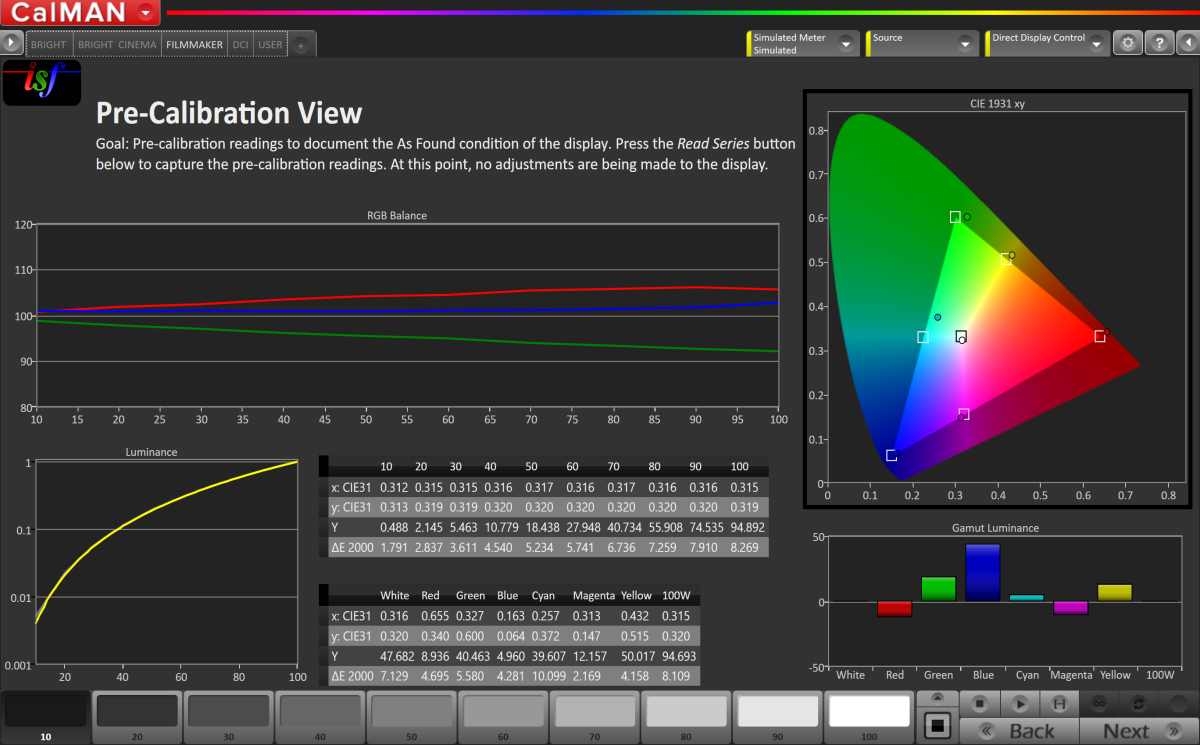
After Calibration
Once the Bright Mode was calibrated, the color gamut and greyscale fall even better into line. As you can see it has a slight inaccuracy in the green, yellow and blue at their peaks, but this was intentionally done so that the color sweeps track well, which is most important to true color accuracy. The greyscale is virtually flat across the range, with small separation above 85%. The gamma is spot on throughout the curve. So much so that you can’t even make out the gray line of the calibrated points as it is perfectly aligned with the yellow reference curve. This results in perfectly rendered images inside 0 and 100%, and it shows in real world watching on the V7050i. Unfortunately there are no 10 point white balance controls to make it even better.

HDR (High Dynamic Range)
Out of the box
When you first fire up the V7050i in HDR Mode, you can see the normal blue “cool” push to the image. Each color appears to follow the RGB Balance across the grayscale linearly, with the blue being high across the range. The EOTF tracks pretty nicely, with some slightly elevated levels in the 10-20% range and lower levels past 30%, rolling into the knee and clipping points. The color points aren’t too far off their marks on the gamut chart and were easy to bring into line during calibration.

After Calibration
Post calibration, the image becomes even more accurate, as expected. The greyscale falls into line nicely with just the normal inaccuracies in the midranges where the tone mapping kicks in. Otherwise it is flat where it should be in the lower and upper ranges, except where it is a little high at the bottom end due to its elevated blacks. The EOTF (HDR “gamma”) is slightly tilted throughout the range, resulting in above spec initially and then below spec slightly once you pass about 20% stimulus. In real world watching this doesn’t seem to be an issue in the overall image, although inaccurate.

We use Ultra HD streaming boxes and UHD Blu-ray players as our primary source for evaluations with HDR. Our primary devices are an AppleTV 4K and an Oppo BDP-203 and Tascam BD-MP4K Professional UHD Blu-ray players. The V7050i rendered the HDR images coming from these sources in great fashion with a very film-like and celluloid image as mentioned a few times previously. We keep mentioning it because we can’t think of another way to describe the great look this projector produces on screen. If you are a movie buff, you will really appreciate what this projector provides. It seemed to have the cleanest and sharpest image while looking like you were actually viewing a true, clean film projection in a quality professional cinema.
While it didn’t have any motion compensation adjustments (MEMC), the motion seemed to be quite optimized without judder or the need to make any adjustments, even with 24p movie based content converted to the projector’s native 60Hz. The colors also took on the same film look to them, lush and natural without any visible banding or being too cartoonish like some RGB Laser USTs tend to present.
There are five adjustable levels for HDR Brightness, which seem to affect the ST2084 HDR curve being presented based on the input parameters, such as peak nits. The midrange setting of 0 out of the possible five (-2, -1, 0, +1, +2) seems to correspond to the most common HDR Mastering level of 1,000 nits, with the lowest -2 being we believe best for 10,000 nits, -1 being for 4,000 nits, +1 for 600 nits and +2 for about 400 nits and below. We came to this conclusion after much testing and evaluation using an HDFury Vertex2 and testing various nit levels via custom HDR EDID/Metadata.
The lens used on the V7050i seems to be of exemplary quality, rendering UHD 4K HDR content with clearly defined pixel structure that is easily visible on screen, with uniform focus across the screen from corner to corner. The only test it doesn’t pass with flying colors is the single pixel pattern, where it creates a sort of checkerboard image due to the eShift pixel shifting process. The 4K image on screen in real world content is very highly detailed and sharp, despite this anomaly using this tough test pattern. There wasn’t any chromatic aberration noticed, especially at normal seating distances.
I used the Filmmaker HDR Mode for final calibration and the scenes in the beginning of Guardians of the Galaxy Vol.2 were simply eye opening. The colors rendered along with the sharpness and detail while still having such a film style image is a wonderful combo, not seen on most other projectors, let alone USTs. Sometimes you forget this is a DLP projector with its organic look and feel.
To Sum It Up
So to wrap it all up, we've definitely got a winner here. It's bright enough to be a television replacement in most living rooms and other light polluted environments. It's got phenomenal colors that are both bright and vivid which give you a very cinematic, film-like image without being over-saturated and cartoony like most RGB Laser USTs. It is also packed with a few other features that you'll find on no other ultra short throw projectors out there as of right now.
In a world of many me too, RGB laser Ultra-Short Throw projectors seemingly coming out every other day, the BenQ V7050i with it’s “old fashioned” blue laser phosphor light engine and color wheel, definitely holds its own and surpasses many of those dime-a-dozen entries. We have said it many times in the last few years. BenQ really seems to care about what they produce and how it looks, combined with affordable price points for the every-man. The BenQ HT5550, BenQ LK970 and BenQ LK936ST showed this in spades and the V7050i is no exception!
In order to get the best performance out of this 4K projector in a moderate to well lit environment, we strongly suggest pairing it with a legitimate 4k+ UST ALR screen such as the Spectra Vantage, Stewart Balon UST, SI Short Throw or Elite Screens DarkStar UST (not their CLR) surface.

